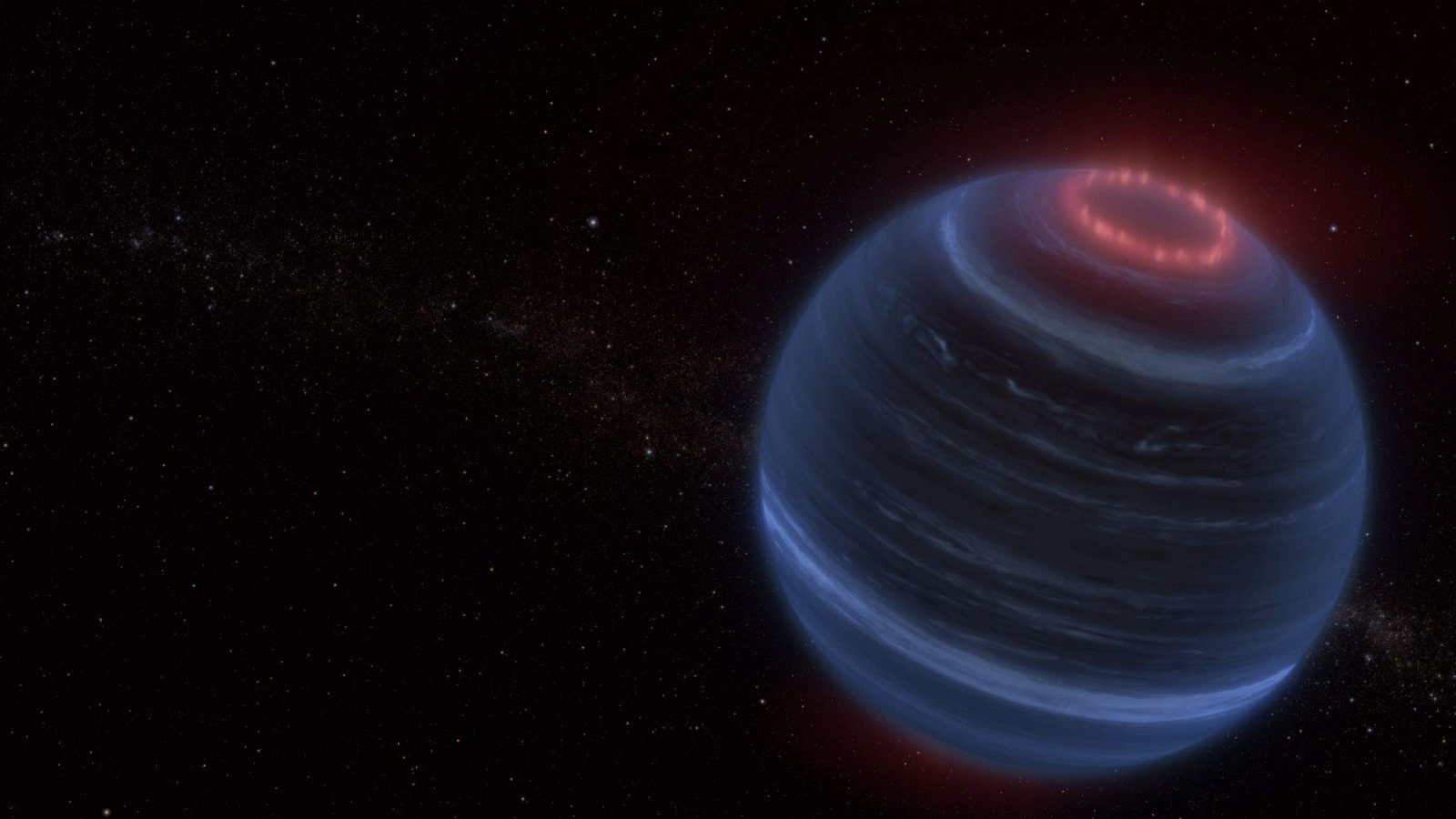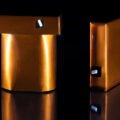The James Webb Space Telescope has detected a massive object larger than Jupiter that appears to be producing infrared emission from methane, in an unexpected discovery by astronomers that could represent evidence of atmospheric heating resulting from auroral processes.
The discovery has baffled astronomers because the object, an isolated brown dwarf called W1935, is cold and lacks any host star to provide its upper atmosphere with the energy that usually drives such methane emissions. According to new research, it is believed the source of the object’s mysterious emissions could arise from processes generating its aurora.
Methane emission is commonly associated with gas giants like Jupiter. Heating that occurs in the planet’s upper atmosphere is the driving force behind this, and astronomers believe it is also linked to the vivid aurora that Jupiter and other gas giants often display.
The closest observations of aurorae occur when they are visible here on our own planet, as energetic particles emanating from the Sun collide with Earth’s magnetic field. Hence, the mystery of W1935, which, unlike planets in our solar system, receives no stellar wind to power its apparent methane emissions.
The discovery raises questions about what process could account for the brown dwarf’s eerie glow, which could result from the presence of interstellar plasmas or some underlying internal process, or even the presence of an active moon nearby, similar to how moons orbiting Jupiter and Saturn can also influence their auroral activity.
The discovery of W1935’s odd emissions occurred as part of a research effort led by astronomer Jackie Faherty with the American Museum of Natural History in New York. However, the brown dwarf’s discovery was made beforehand by Dan Caselden, a citizen scientist responsible for the discovery of other similar objects, with help from NASA’s Wide Field Infrared Survey Explorer.
Viewed through the James Webb Space Telescope’s powerful eye, W1935 appeared almost identical to another of Caselden’s discoveries, a brown dwarf with the designation W2220, except for W1935’s curious methane emissions, which were quickly evident in the infrared wavelengths observed by Webb.
Faherty said the observation initially confused her team.
“My first thought was, what the heck? Why is methane emission coming out of this object?” Faherty said in a statement.
Based on computer models, W1935 differed significantly from W2220 in that its atmosphere appeared to grow warmer in proportion to altitude, an apparent temperature inversion.
Ben Burningham, who led the models used in the research and a co-author of the team’s recent study, said this phenomenon has been observed before, but not on planets as isolated as W1935, which receive no heat from a nearby star.
Temperature inversions are also prevalent on nearby gas giants like Jupiter and Saturn. Although their causes remain somewhat mysterious, the current leading theory involves external heating that results from the presence of aurorae. This idea has been relied on in the past to explain similar unusual observations astronomers have made of brown dwarfs. Anomalous radio emissions associated with brown dwarfs noted for their warm temperatures have similarly been viewed as a possible result of aurorae.
However, W1935 is the first brown dwarf astronomers have detected beyond our solar system whose signatures appear to convey evidence of methane emission, and it is also the coolest auroral candidate of its kind, estimated to be close to 600 degrees Fahrenheit warmer than Jupiter.
“With W1935, we now have a spectacular extension of a solar system phenomenon without any stellar irradiation to help in the explanation,” Faherty said in a statement.
With stellar winds obviously ruled out, Faherty and her team hope that future observations with help from the James Webb Space Telescope may help to determine whether an active moon orbiting W1935 could help to account for the curious methane emissions it produces.
Micah Hanks is the Editor-in-Chief and Co-Founder of The Debrief. He can be reached by email at micah@thedebrief.org. Follow his work at micahhanks.com and on X: @MicahHanks.

